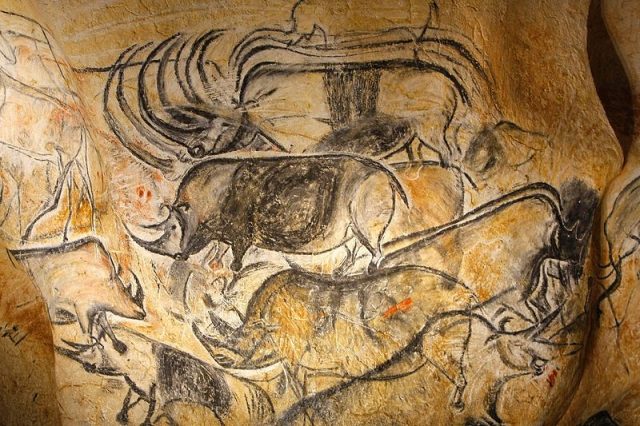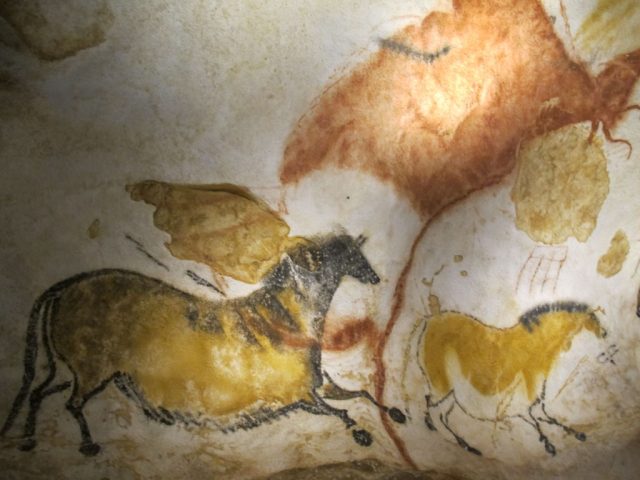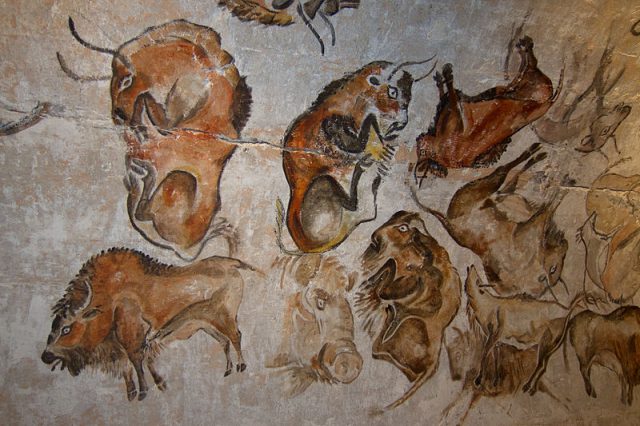A paleolithic sanctuary with with ancient cave art has been revealed in Catalonia, Spain. Every once in a while, someone stumbles on a site bearing the cave art of local ancient peoples. The most recent of these finds was made last year, on October 30th. The discovery was made in a cave known as Cova de la Font Major in the Catalonian Village of L’Espluga di Francoli in the northwest corner of Spain.
According to a recent Newsweek report, a small, hard to reach portion of the cave was full of 15,000-year-old engravings, some of which were abstract and others of which were representative. According to Joseph Verges, the archaeologist leading the team who made the find, the carvings in this cave are the oldest examples of cave art ever found in the area and are an ‘excellent find.’ The find is remarkable enough that even though the discovery was made last October, they delayed announcing the cave for months to ensure it was secured.
The estimation of the age of the Paleolithic sanctuary was done based on the style of the carvings, although some may be a bit more or less recent. Most of the representations the team found were of animals, such as oxen, horses, and deer, and are of very high quality. It’s believed that the site may have been a shrine or religious sanctuary by ancient Iberians.
— Arqueofilia (@Arqueofilia) February 8, 2020
They were carved into a layer of sandy silt, which may have made them easier to incise onto the cave’s surface, but it also means that they are very fragile and easy to damage, and must therefore be treated very carefully. To that end, a team is now using video and 3-D scanning technology as a means of documenting the art and providing a means for researchers to examine it at greater length without putting its integrity at risk. Because of the fragility of the site, it’s unlikely that it will ever be opened to the public.
A report, from the Daily Mail, noted that Spain was already known to have several sites featuring Paleolithic cave art, and that Cantabria, in the northern part of the country, has the highest concentration of such art in the world. This particular site was found when Verges’s team was checking the area after a flooding in the area.

The Paleolithic Age, from whence this sanctuary is from, spanned a period of between two and three million years. For the purposes of talking about Paleolithic art, however, the pertinent chunk of time runs from about forty thousand years ago to about ten thousand. That’s the span when Homo sapiens was first rising and making its mark on the world.

The art of the period came in two forms. Portable art included things like carved figurines or decorated objects, all of which would have been made from things like clay, stone, or bone. Stationary art is exactly what it sounds like, art which couldn’t be moved, and it includes things like the carvings found at Cova de la Font and ancient cave paintings. Portable items were very often figurative in nature, created to represent something very specific. Stationary art could be figurative as well, such as the carvings in the cave, but it was also more likely to feature more abstract and symbolic images, as well.

The general theory is that Paleolithic art of either variety was at least in part about helping early people feel that they had some sort of control over their environments, even if it was just of a ritual or magical variety, and the work focused around things that were important to their daily lives, such as fertility, hunting scenes, and representations of the animals they relied on, such as the figures in the carvings that were just discovered.
Related Article: Tour Through the Most Stunning Prehistoric Cave Paintings in the World
While those carvings are the oldest of their type yet known, ancient people began making cave paintings earlier yet. The oldest known cave paintings date back about forty thousand years, and are in the El Castillo cave in Cantabria, Spain.
